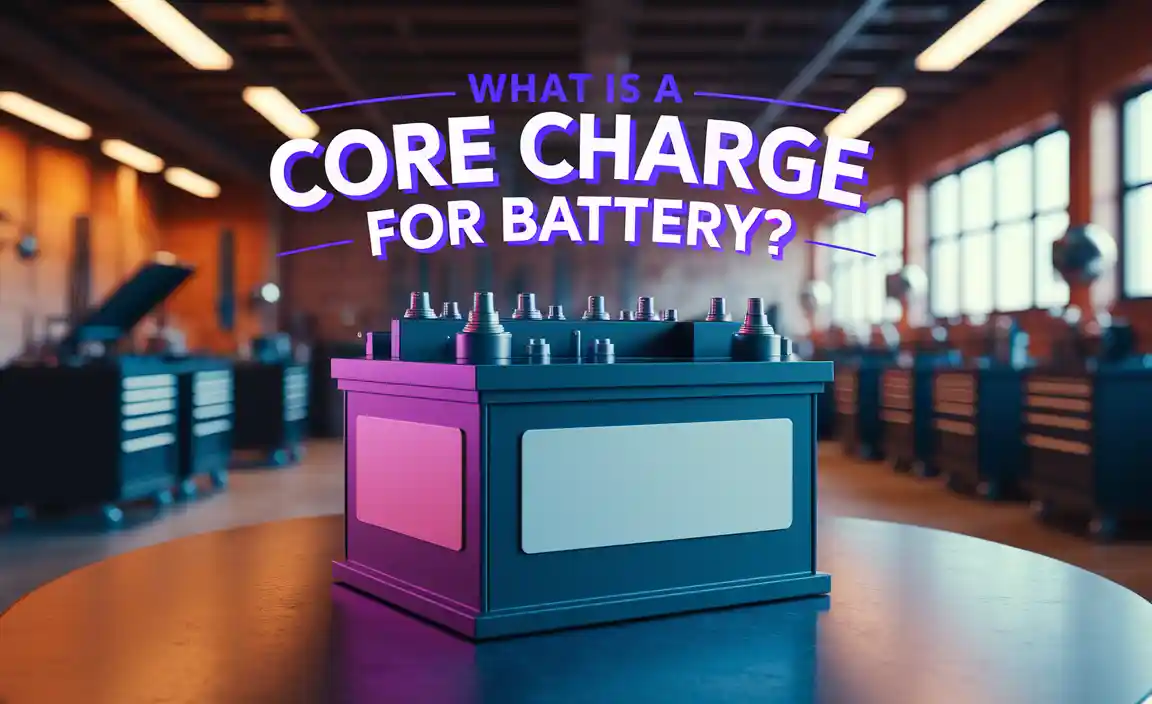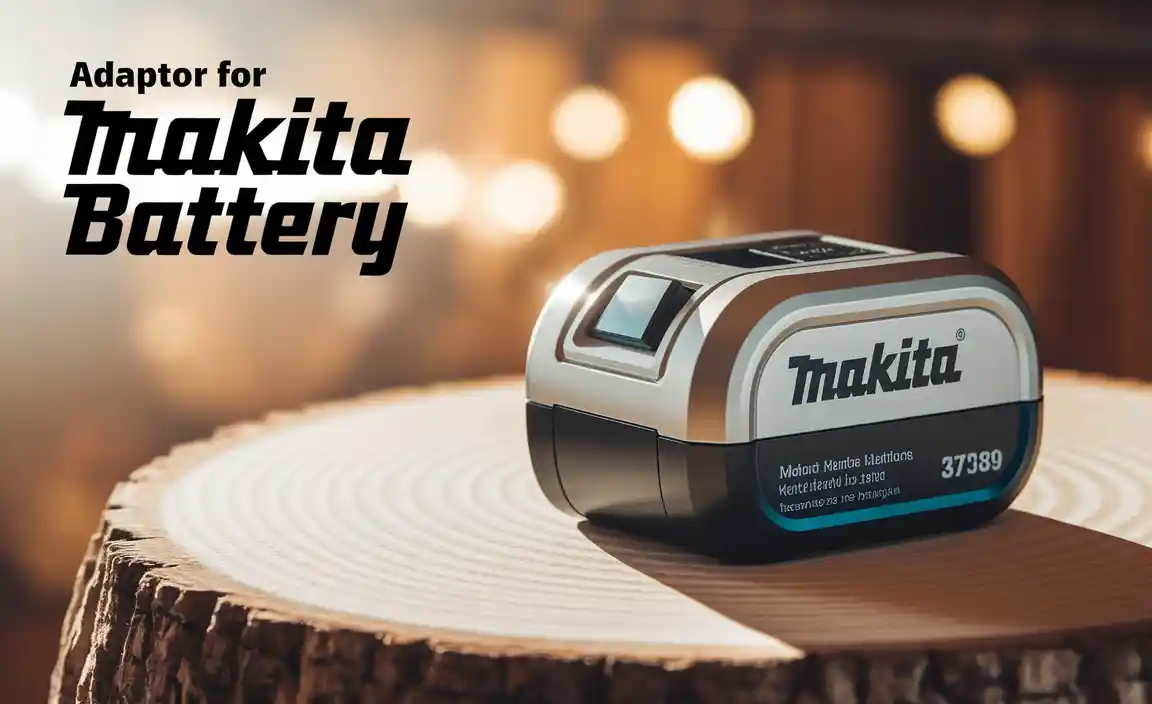Quick Summary: Find the best battery charger for your Craftsman cordless drill to ensure it’s always ready. This guide simplifies picking the right charger, offering reliable options that boost drill performance and battery life. Get back to your projects faster with our easy, proven recommendations.
Is your Craftsman cordless drill battery always running out of juice when you need it most? It’s a common headache for DIYers and pros alike. A dead battery can bring your project to a screeching halt. But the good news is, picking the right battery charger for your Craftsman drill doesn’t have to be complicated. We’ll show you exactly how to find a charger that works perfectly, keeps your batteries healthy, and gets you powered up in no time. Let’s dive in and make sure your drill is always ready to go!
Why the Right Charger Matters for Your Craftsman Drill
Choosing the correct battery charger for your Craftsman cordless drill is more important than you might think. It’s not just about getting power back into your battery; it’s about protecting your investment and ensuring your drill performs at its best. Using the wrong charger can lead to a few problems that we definitely want to avoid.
Firstly, the wrong charger might not deliver the correct voltage or amperage. This can mean your battery charges too slowly, charges too quickly and overheats, or simply doesn’t charge at all. Overcharging or improperly charging can significantly shorten the lifespan of your battery. Batteries are the heart of cordless tools, and their longevity directly impacts how much use you get out of your drill before needing to buy a replacement.
Secondly, safety is a big deal. Using a charger not designed for your specific Craftsman battery could potentially damage both the battery and the charger, leading to sparks, overheating, or even fire hazards. We prefer our tools to be safe and reliable, so sticking with the right gear is key.
A good charger also helps maintain the optimal health of your battery. Many modern chargers have smart features that detect the battery’s status and adjust the charging process accordingly. This means they can prevent overcharging, manage heat, and even help condition older batteries to hold a charge better. This isn’t just about convenience; it’s about getting the most power and the longest life out of the batteries you’ve paid for.
Finally, the right charger means you spend less time waiting and more time doing. If you’re in the middle of a big project, or just need to fix something around the house, a fast and efficient charging solution is invaluable. We’ll help you navigate the options so you can find a “battery charger for Craftsman cordless drill” that fits your needs perfectly.
Understanding Craftsman Battery Types
Craftsman has been making tools for a long time, and over the years, they’ve used different battery technologies. Knowing what kind of battery you have is the first step to finding the right charger. The main types you’ll encounter are Nickel-Cadmium (NiCd), Nickel-Metal Hydride (NiMH), and Lithium-ion (Li-ion).
Nickel-Cadmium (NiCd) Batteries: These were some of the earliest rechargeable batteries used in power tools. They are bulky and heavy, and they have an issue called the “memory effect,” where if you repeatedly recharge them before they are fully depleted, they can lose some of their capacity. NiCd chargers are usually simple and don’t have as many advanced features.
Nickel-Metal Hydride (NiMH) Batteries: NiMH batteries came along as an improvement over NiCd. They are more environmentally friendly, have a higher energy density (meaning they can hold more power for their size), and have less of a memory effect. Chargers for NiMH batteries might have some basic monitoring to prevent overcharging.
Lithium-ion (Li-ion) Batteries: These are the most common type of battery in modern cordless tools, including many newer Craftsman models. Li-ion batteries are lightweight, powerful, and don’t suffer from the memory effect at all. They also hold their charge for a long time when not in use. Chargers for Li-ion batteries are quite sophisticated. They monitor individual cells within the battery pack, manage heat, and ensure a safe and efficient charge. You’ll often see phrases like “smart charging” or “diagnostics” associated with these chargers.
It’s crucial to match your charger to your battery type. A Li-ion charger will not work with a NiCd battery, and vice-versa. Trying to force a compatible charger onto the wrong battery type can damage both and be a safety risk. Always check the label on your battery and the specifications of the charger to ensure they are compatible.
Identifying Your Craftsman Drill Model and Battery
Before you shop for a “battery charger for Craftsman cordless drill,” take a few minutes to figure out exactly which Craftsman drill and battery you have. This will save you a lot of guesswork and potential frustration. Craftsman tools often have model numbers that are printed directly on the tool itself, usually on a label or etched into the plastic casing. Look around the body of your drill, near the motor housing, or on the battery compartment.
The battery itself will also have important information. On the side or bottom of the battery pack, you’ll find a label that usually indicates the voltage (e.g., 12V, 18V, 20V MAX) and the chemistry (NiCd, NiMH, Li-ion). Sometimes, it might also list a specific battery part number.
Here’s a quick guide to where you can usually find this information:
- On the Drill: Look for a label with a model number like “CBT100,” “CMCD700,” or similar. This number is key to finding compatible accessories.
- On the Battery: Check for voltage (e.g., 19.2V, 20V MAX). Also, look for the battery chemistry (NiCd, NiMH, Li-ion) and any specific part numbers.
If you’re having trouble finding the model number, snap a clear picture of your drill and battery and do an image search online. Many hardware store websites or forums dedicated to tools can help you identify your model once you have a visual. Knowing these details ensures you buy a charger that’s designed for your specific Craftsman battery system, guaranteeing proper fit and function.
Types of Craftsman Battery Chargers
Craftsman offers a range of battery chargers designed to meet different needs and budgets. Understanding these options will help you choose the best one for your situation. Most chargers are designed to work with a specific voltage range and battery chemistry, so always double-check compatibility.
Standard Replacement Chargers
These are typically the most straightforward chargers. They are designed to replace an original charger that may have been lost or damaged. They offer basic charging functionality without many bells and whistles. While reliable, they might not have advanced features like rapid charging or battery conditioning.
Fast Chargers
As the name suggests, fast chargers are built to power up your batteries significantly quicker than standard models. This is a huge advantage if you’re working on a project and need to get back to it without a long wait. They often use higher amperage to deliver more power to the battery in less time. Craftsman’s 20V MAX and 5.0 Ah Lithium-ion batteries, for example, can benefit greatly from a fast charger.
Multi-Chemistry Chargers
If you have a collection of Craftsman tools with different battery types (like older NiCd and newer Li-ion), a multi-chemistry charger can be a very convenient option. These chargers are designed to detect the battery type inserted and adjust their charging cycle accordingly, making them versatile for households with mixed tool batteries.
Multi-Bay Chargers
For serious DIYers or professionals who use multiple battery-powered tools, a multi-bay charger is a lifesaver. These chargers can charge two, three, or even more batteries simultaneously. This drastically reduces downtime, as you can always have at least one battery ready to go while others are charging.
Worksite Chargers
These chargers are built tough for demanding environments. They often feature rugged construction, weather resistance, and sometimes even integrated work lights or USB ports for charging other devices like phones. They are designed to withstand the bumps and spills that can happen on a job site or in a busy workshop.
When looking for a “battery charger for Craftsman cordless drill,” consider how often you use your drill, how many batteries you have, and how quickly you need them charged. Craftsman’s official website is a great resource for seeing their current range of chargers.
Recommended Chargers for Craftsman Cordless Drills
Finding the perfect “battery charger for Craftsman cordless drill” can feel overwhelming with so many options. Based on common Craftsman battery systems and user feedback, here are some highly recommended types and specific models that consistently perform well. We’ll focus on durability, charging speed, and compatibility.
For Craftsman 20V MAX Lithium-ion Batteries
The 20V MAX system is Craftsman’s cornerstone for cordless tools. For these batteries, the primary goal is speed and efficiency.
- Craftsman 20V MAX Lithium-ion Fast Charger (Model CMCC102): This is often the go-to for users needing a quick charge. It’s designed to charge most 20V MAX batteries in about an hour or less, depending on the battery’s amp-hour (Ah) rating. It features diagnostic lights to indicate charging status and potential battery issues. This is an excellent choice for keeping your most-used batteries ready.
- Craftsman 20V MAX Lithium-ion Double Rapid Charger (Model CMCB105): If you’re constantly swapping batteries or have multiple 20V tools, this charger takes efficiency to the next level. It charges two batteries simultaneously, and often at a fast rate. This eliminates waiting time and ensures you always have a fully charged backup.
For Older Craftsman 19.2V Batteries (NiCd/NiMH)
Many users still have legacy Craftsman tools. Finding chargers for these can be a bit more challenging, but they are available.
- Craftsman 19.2V NiCd/NiMH Battery Charger (Model CMCB101 or similar): This is a standard replacement charger for older Craftsman 19.2V battery packs. While not a “fast” charger by today’s standards, it reliably charges these older battery chemistries. It’s essential to ensure the model number matches your specific battery to avoid compatibility issues. You might find these through parts suppliers or even on marketplaces like Amazon or eBay. For example, 19.2V NiCd batteries are known to be quite robust but can benefit from careful charging to avoid the memory effect.
General Purpose & Universal Options
While Craftsman makes excellent branded chargers, sometimes aftermarket options can also be reliable, especially if they explicitly state compatibility and safety certifications.
- Third-Party Lithium-ion Chargers: Brands that specialize in power tool batteries and chargers sometimes offer universal or compatible chargers for Craftsman Li-ion batteries. Always ensure these come with safety certifications (like UL listing) and positive reviews specifically mentioning Craftsman compatibility. They might offer faster charging or more features at a lower price point.
When selecting a “battery charger for Craftsman cordless drill,” always verify the voltage and battery chemistry it supports against your specific battery. Referring to your drill’s manual or the battery itself is the best way to confirm. For more information on tool battery care, the Popular Mechanics guide to battery types can offer helpful context.
How to Choose the Right Charger: A Step-by-Step Guide
Picking the right “battery charger for Craftsman cordless drill” doesn’t have to be a guessing game. By following a few simple steps, you can confidently select a charger that will keep your tools powered up and your projects moving forward. Let’s break it down.
Step 1: Identify Your Battery Type and Voltage
This is the most critical step. Grab your Craftsman battery and look closely at the label. You need to know:
- Voltage: Is it 12V, 18V, 19.2V, 20V MAX, or something else? The “MAX” in 20V MAX indicates the peak voltage, which is standard for Li-ion batteries.
- Chemistry: Is it NiCd (Nickel-Cadmium), NiMH (Nickel-Metal Hydride), or Li-ion (Lithium-ion)? These are not interchangeable through chargers.
Refer back to the section “Understanding Craftsman Battery Types” and “Identifying Your Craftsman Drill Model and Battery” if you need help.
Step 2: Determine Your Charging Needs
Think about how you use your drill and what your priorities are:
- Speed: Do you need your battery charged as quickly as possible, or are you okay with a slower charge overnight? If speed is important, look for “Fast Charger” or “Rapid Charger” in the product description.
- Volume: How many batteries do you have? If you have several batteries, a multi-bay charger can save you a lot of time. If you only have one or two, a single-bay charger is fine.
- Environment: Will the charger be used in a clean workshop, or on a dusty, potentially damp job site? For rough environments, look for more durable, worksite-specific chargers.
Step 3: Check for Craftsman Compatibility (or Verified Third-Party)
The safest bet is always a charger made by Craftsman for your specific battery system. Look for chargers that explicitly list your battery’s voltage and chemistry. If you consider a third-party charger, ensure it:
- States Clear Compatibility: It should specifically mention it’s for Craftsman batteries of your voltage and chemistry.
- Has Safety Certifications: Look for marks like UL, CE, or FCC. These indicate the product has met safety and performance standards.
- Has Good Reviews: Check user reviews for mentions of charging speed, reliability, and any issues encountered with Craftsman batteries.
- Offers a Warranty: A good warranty provides peace of mind.
Step 4: Compare Features and Price
Once you’ve narrowed down your options, compare the features against the price. A basic charger will be cheaper but might charge slower. A fast, multi-bay charger will cost more but offer significant time savings and convenience. Consider the lifespan of your battery and how much value you place on quick turnarounds.
Step 5: Purchase and Test
Buy your chosen charger from a reputable retailer. When it arrives, plug it in and insert your Craftsman battery. Observe the charging indicators. Does it seem to be charging correctly? Does it fit snugly? Once charged, test your drill. If everything works as expected, you’ve found a great “battery charger for Craftsman cordless drill”!
Tips for Battery Care and Charger Maintenance
To get the most out of your Craftsman cordless drill and its batteries, proper care and maintenance of both the batteries and the charger are essential. These simple practices can significantly extend their lifespan and ensure reliable performance when you need it most.
Battery Care Tips
- Avoid Full Discharges (Especially NiCd): For NiCd and NiMH batteries, try to avoid running them completely dead every single time. Partial charges are generally fine due to modern charger technology, but completely draining them frequently can reduce their overall capacity over time.
- Store Batteries Properly: If you’re not going to use your drill for an extended period (more than a month), store the batteries in a cool, dry place. For Li-ion batteries, a charge level of around 50-70% is often recommended for long-term storage. Avoid storing them in extreme temperatures (hot or cold).
- Keep Battery Contacts Clean: Over time, dirt, dust, and debris can accumulate on the metal contacts of your battery pack and the charger. This can interfere with charging. Gently clean these contacts with a dry cloth or a pencil eraser. For stubborn grime, a small amount of isopropyl alcohol on a cotton swab can work, but ensure it dries completely before charging.
- Protect from Extreme Temperatures: Never leave your batteries in a hot car or direct sunlight, and avoid using or charging them in freezing temperatures. Extreme heat can damage the internal components of the battery, while extreme cold can temporarily reduce performance and, in some cases, permanently damage the battery.
You can find more detailed information on battery longevity from resources like the Energizer battery care guide, which offers general principles applicable to tool batteries.
- Use the Right Charger: As we’ve emphasized, always use a charger specifically designed for your Craftsman battery type (voltage and chemistry).
Charger Maintenance Tips
- Keep the Charger Clean: Just like the batteries, keep the charger’s contacts and vents clean and free of dust and debris. Use a dry cloth for cleaning. Ensure the charger



